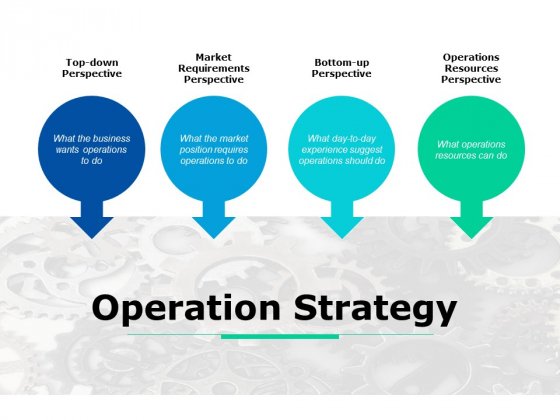Unlocking the Layers of Strategic Planning: Corporate, Business, and Operations Strategy
In the dynamic landscape of business, strategic planning is the compass that guides organizations towards success and growth. At the heart of this planning process lie three distinct yet interconnected layers of strategy – Corporate Strategy, Business Strategy, and Operations Strategy. Each layer plays a crucial role in shaping the organization’s direction, competitive advantage, and operational efficiency.
In this blog post, we embark on a journey to explore the differences and nuances of these strategic layers. From the top-level decisions made by executives in corporate strategy to the mid-level focus of business strategy on competitive positioning, and finally, delving into the nitty-gritty of operational excellence in operations strategy, we will demystify their unique roles in an organization’s strategic framework.
Join us as we uncover the key elements, scope, and level of decision-making within each layer. By understanding these distinctions, businesses can effectively align their efforts, optimize resources, and drive sustainable growth in today’s ever-changing business landscape.
1. What is Corporate Strategy?
Corporate Strategy is a vital aspect of an organization’s success, as it provides a roadmap for the entire company’s direction and growth. Let’s expand on the key elements of corporate strategy:
Identifying the Company’s Mission, Vision, and Core Values:
At the core of the corporate strategy is a clear and concise statement of the company’s mission, outlining its fundamental purpose and reason for existence. The mission statement serves as a guiding principle for all stakeholders and helps align the organization’s efforts towards a common goal. Additionally, the vision statement articulates the desired future state the company aims to achieve, inspiring employees and stakeholders to work towards a shared aspiration. Alongside the mission and vision, the organization’s core values define the principles and beliefs that shape the company’s culture and behaviour.
Defining the Portfolio of Businesses the Company Operates in or Intends to Enter:
Corporate strategy involves decisions about the company’s scope and the industries it operates in. This includes evaluating existing business units and determining their fit with the overall corporate objectives. Additionally, corporate strategists may explore opportunities for diversification into new markets or industries that align with the company’s strengths and growth aspirations. These strategic decisions have far-reaching implications for resource allocation and portfolio management.
Making Decisions about Mergers, Acquisitions, Divestitures, and Alliances:
In pursuit of growth and competitive advantage, corporate strategists assess opportunities for mergers, acquisitions, divestitures, and alliances. These actions can help the organization expand its capabilities, access new markets, or streamline operations. Mergers and acquisitions can lead to synergies; conversely, divestitures may allow the company to focus on its core competencies. Strategic alliances and partnerships offer collaboration opportunities to enhance market presence and innovation.
Allocating Resources across Different Business Units and Markets:
Resource allocation is a critical aspect of corporate strategy. Decisions must be made on how to distribute financial, human, and technological resources among various business units and geographical markets. Balancing short-term and long-term goals is crucial to ensure sustainable growth and optimize performance across the organization.
Determining the Long-Term Objectives and Financial Goals of the Organization:
Long-term objectives and financial goals are essential components of corporate strategy. These targets provide direction and serve as yardsticks for measuring the company’s performance. They encompass revenue and profit targets, market share goals, return on investment expectations, and other key performance indicators that drive organizational success.
In conclusion, corporate strategy is the overarching plan that sets the course for the entire organization. By defining its mission, vision, and values, making strategic decisions on portfolio management, mergers, acquisitions, and resource allocation, and setting long-term objectives, a company can create a cohesive and purpose-driven path to success. Corporate strategy ensures alignment among different business units, maximizes opportunities for growth, and positions the organization to adapt to dynamic market conditions effectively. As a result, it serves as the foundation for business decision-making and the driving force behind sustainable growth and competitiveness.

2. What is Business Strategy?
Business Strategy plays a critical role in shaping the success and competitiveness of individual business units or divisions within an organization. Let’s delve deeper into the key elements of business strategy:
Analyzing the Market and Identifying Target Customer Segments:
Business strategy begins with a thorough analysis of the market in which the business unit operates. This involves studying customer needs, preferences, and behaviours, as well as identifying potential market segments with the highest growth potential and profitability. Understanding the market dynamics allows the business to tailor its offerings to meet specific customer demands effectively.
Determining the Unique Value Proposition and Competitive Advantage of the Business Unit:
To stand out in a crowded market, businesses must define their unique value proposition. This involves identifying the key features, benefits, or attributes that set the business apart from its competitors and resonate with the target customers. Leveraging a distinctive competitive advantage enables the business to position itself as a preferred choice in the market.
Defining the Product or Service Offerings and Pricing Strategy:
Business strategy requires a clear definition of the product or service offerings that align with the identified target market. This includes product features, quality levels, and any additional services offered. An effective pricing strategy, determined through a balance of market research and cost analysis, ensures that prices are competitive, attractive to customers, and conducive to achieving revenue and profitability goals.
Assessing the Sales and Distribution Channels:
An essential aspect of business strategy is evaluating the most efficient and effective sales and distribution channels to reach the target customers. This may involve direct selling, e-commerce, retail partnerships, or a combination of various channels. The goal is to ensure that the product or service reaches the intended audience with minimum friction.
Identifying Growth Opportunities and Market Expansion Strategies:
Business strategy involves exploring opportunities for growth and expansion. This may include expanding into new geographic markets, targeting untapped customer segments, or diversifying product offerings to meet changing customer needs. The identification and pursuit of growth opportunities are vital to ensure the long-term sustainability and competitiveness of the business unit.
In conclusion, business strategy is instrumental in charting the path for a specific business unit’s success. By analyzing the market, defining a unique value proposition, and determining the product offerings, pricing, and distribution channels, businesses can gain a competitive edge. The ability to identify growth opportunities and adapt to market changes ensures continued relevance and growth for the business unit. A well-crafted business strategy aligns the efforts of the team, guides resource allocation, and positions the unit to thrive in its market, contributing significantly to the overall success of the organization.
What is Operations Strategy?
Operations Strategy plays a fundamental role in ensuring the effective and efficient production and delivery of goods or services within an organization. Let’s explore the key elements of operations strategy in greater detail:
Designing the Production or Service Delivery Processes:
Operations strategy involves designing the processes and workflows that govern the production or delivery of goods and services. This includes optimizing the sequence of activities, identifying potential bottlenecks, and streamlining operations to improve productivity and minimize wastage. A well-designed process ensures the smooth flow of activities, from raw materials to the finished product or service.
Deciding on the Sourcing and Procurement of Raw Materials and Resources:
Effective operations require a strategic approach to sourcing and procurement. This entails identifying reliable suppliers, negotiating favourable contracts, and ensuring the timely availability of raw materials and resources. A robust sourcing strategy helps manage costs, maintain quality standards, and mitigate supply chain risks.
Managing Inventory and Supply Chain Logistics:
Operations strategy addresses the management of inventory levels to balance demand and supply. Striking the right balance helps avoid excess inventory costs while ensuring products are available to meet customer demands. Additionally, supply chain logistics play a crucial role in operations strategy, ensuring efficient transportation and distribution to deliver goods or services to customers promptly.
Implementing Quality Control Measures and Continuous Improvement Initiatives:
Quality control is an integral part of operations strategy, as it ensures that products or services meet defined standards and customer expectations. Implementing quality control measures safeguards against defects and customer complaints. Furthermore, continuous improvement initiatives, such as Lean or Six Sigma methodologies, aim to enhance efficiency, eliminate waste, and optimize processes over time.
Determining the Capacity and Resource Utilization to Meet Demand:
Operations strategy involves assessing capacity requirements to match anticipated demand. Understanding resource utilization helps optimize production or service delivery, avoiding underutilization or overloading of resources. Proper capacity planning ensures that the organization can respond effectively to fluctuations in demand without compromising on quality.
In conclusion, operations strategy is crucial for organizations to achieve operational excellence and deliver high-quality goods or services to customers efficiently. By focusing on process design, sourcing, inventory management, quality control, and capacity planning, businesses can streamline operations and enhance their competitive advantage. A well-executed operations strategy maximizes resource utilization, reduces costs, and improves overall organizational performance, leading to increased customer satisfaction and sustained growth in the marketplace.
What is the Relationship Between Corporate Strategy Business Strategy And Operations Strategy?
The relationship between Corporate Strategy, Business Strategy, and Operations Strategy is one of interconnectedness and alignment within an organization’s overall strategic framework. These three levels of strategy are complementary and work together to achieve the organization’s objectives and drive success. Here’s a closer look at their relationship:
Alignment of Objectives:
The primary goal of strategic planning is to ensure that all levels of strategy align with each other and with the organization’s overall vision and mission. Corporate Strategy sets the long-term direction and overarching objectives for the entire organization. Business Strategy is then developed to align the goals of individual business units with the corporate objectives. Similarly, Operations Strategy is designed to support and contribute to the achievement of business-level goals. This alignment ensures that every level of the organization is working towards a common purpose.
Cascading of Decision-Making:
Strategic decision-making cascades down from Corporate Strategy to Business Strategy and further down to Operations Strategy. The decisions made at the corporate level influence the strategic direction of the business units. In turn, business-level decisions influence how operational units optimize processes and resources to achieve business objectives. This cascading approach ensures that every level of the organization is interconnected and working in harmony towards the overall success of the company.
Strategic Integration:
An effective strategic integration ensures that the strategies at each level support and reinforce each other. Corporate Strategy provides a framework for business units to align their strategies with the overall direction of the organization. Business units, in turn, design strategies that align with and enhance the corporate vision. Operations Strategy is closely integrated with both Corporate and Business Strategies to ensure that operational decisions contribute to achieving broader organizational goals.
Resource Allocation:
Resource allocation is closely linked to strategic planning. Corporate Strategy allocates resources across different business units and functions based on their strategic importance and potential for growth. Business Strategy then determines how resources are allocated within individual units to achieve specific objectives. Operations Strategy further optimizes the allocation of resources to improve efficiency and effectiveness in production or service delivery.
Dynamic Relationship:
The relationship between the three levels of strategy is dynamic and adaptive. As the external environment and market conditions change, organizations need to be flexible in adjusting their strategies. Corporate Strategy must respond to market trends and shifts, influencing business and operations-level decisions. Business units, in turn, may identify opportunities for growth that influence adjustments in Corporate Strategy. Likewise, operational adjustments can impact the efficiency and effectiveness of both Business and Corporate Strategies.
In conclusion, Corporate Strategy, Business Strategy, and Operations Strategy are interconnected and mutually supportive. Their relationship ensures that the organization operates cohesively, from the highest levels of direction-setting to the execution of day-to-day operations. Strategic alignment and integration are essential for an organization to thrive and achieve its long-term goals in a competitive and ever-changing business landscape.
Corporate Strategy Vs Business Strategy Vs Operations Strategy
The three strategic levels – Corporate Strategy, Business Strategy, and Operations Strategy – differ in scope, focus, and level of decision-making within an organization. Let’s explore the differences between them:
Scope and Focus:
- Corporate Strategy: Corporate strategy focuses on the entire organization and addresses questions related to the overall direction, scope, and purpose of the company. It involves decisions made by top-level executives and the board of directors, aiming to achieve the organization’s long-term objectives and create value for stakeholders.
- Business Strategy: Business strategy is concerned with a specific business unit or division within the organization. It zooms in on how that particular unit will compete in its market, achieve its goals, and gain a competitive advantage over rivals.
- Operations Strategy: Operations strategy is focused on the operational aspects of the organization. It deals with designing and managing processes, resources, and systems necessary to produce goods or deliver services efficiently.
Level of Decision-Making:
- Corporate Strategy: Corporate strategy involves high-level decisions made by top executives and the board of directors. These decisions impact the entire organization and set the direction for individual business units.
- Business Strategy: Business strategy involves mid-level decisions made by managers and leaders responsible for specific business units. They shape how the unit will compete and achieve its objectives.
- Operations Strategy: Operations strategy involves lower-level decisions made by operational managers. They address the day-to-day processes and activities required to execute business strategies effectively.
Time Horizon:
- Corporate Strategy: Corporate strategy focuses on long-term planning, typically spanning several years. It defines the organization’s vision and sets the direction for future growth and development.
- Business Strategy: Business strategy usually covers a medium-term time horizon, ranging from one to three years. It outlines how the business unit will achieve its objectives and respond to market dynamics.
- Operations Strategy: Operations strategy addresses short-term planning, focusing on optimizing immediate processes, resource allocation, and efficiency.
Key Elements:
- Corporate Strategy: Key elements of corporate strategy include defining the company’s mission, vision, and core values, determining the portfolio of businesses, making decisions about mergers and acquisitions, allocating resources across business units, and setting long-term financial goals.
- Business Strategy: Key elements of business strategy include market analysis and customer segmentation, defining the unique value proposition and competitive advantage, determining product offerings and pricing strategy, assessing sales and distribution channels, and identifying growth opportunities.
- Operations Strategy: Key elements of operations strategy include designing production or service delivery processes, sourcing and procurement decisions, inventory and supply chain management, quality control measures, and capacity planning.
In summary, corporate strategy focuses on the organization as a whole and sets the long-term direction, business strategy zooms in on individual business units to achieve their objectives and gain a competitive edge, and operations strategy addresses the operational aspects of the organization to optimize processes and resource utilization. These three levels of strategy are interconnected and essential for achieving organizational success and alignment across different functional areas.
Conclusion
As we conclude our exploration of Corporate Strategy, Business Strategy, and Operations Strategy, it becomes evident that a cohesive and well-integrated approach to strategic planning is essential for organizational success. These three strategic layers serve as building blocks that shape the organization’s purpose, competitiveness, and operational effectiveness.
Corporate strategy sets the foundation, defining the organization’s vision, and charting its course towards long-term success. Business strategy refines this direction, positioning individual business units to seize opportunities, gain a competitive edge, and achieve specific objectives.
At the operational level, operations strategy ensures that the engine of the organization runs smoothly. It focuses on optimizing processes, managing resources, and delivering products or services efficiently to meet customer demands.
By recognizing the distinctions and interconnectedness of these strategic layers, businesses can foster alignment, make informed decisions, and respond adeptly to market shifts and challenges. The journey of strategic planning is a continuous one, requiring adaptability, innovation, and a clear focus on customer needs.
As you navigate the complexities of strategic planning in your organization, remember that each layer plays a vital role, and their harmonious interplay will pave the way to sustainable growth and success. Embrace the power of strategic thinking and propel your organization towards a future filled with possibilities and achievements.




